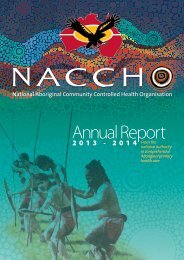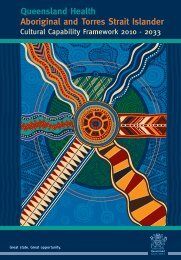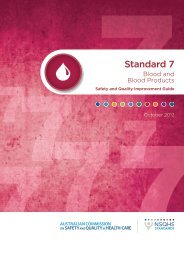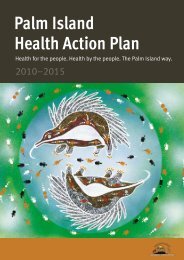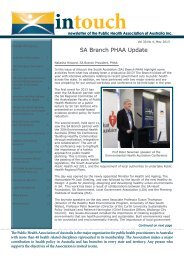CLOSING THE GAP
ctg-report-2017
ctg-report-2017
Create successful ePaper yourself
Turn your PDF publications into a flip-book with our unique Google optimized e-Paper software.
1<br />
1<br />
Indigenous innovation<br />
through Flint programme 1<br />
The Indigenous Digital Excellence<br />
Flint Program is sparking the<br />
interest, ideas and talent of young<br />
Aboriginal and Torres Strait Islanders<br />
through digital technology.<br />
The non-government partnership<br />
between the Telstra Foundation and<br />
the Redfern-based National Centre<br />
of Indigenous Excellence (NCIE)<br />
provides in-kind support for regional<br />
Indigenous communities through<br />
hands on workshops for young<br />
people, skills development for local<br />
facilitators as well as equipment<br />
and educational resources.<br />
“Technology is being embraced<br />
in our communities in all kinds of<br />
ways. We know that smart phones<br />
for example, are in heavy use in<br />
our communities but when you<br />
move into coding, robotics or 3D<br />
printing you’re really talking about<br />
quite new technologies,” said<br />
Kirsty Parker, CEO of the National<br />
Centre for Indigenous Excellence.<br />
The Flint Program encourages<br />
excitement and a thirst for<br />
knowledge in remote communities<br />
where both young people and<br />
Elders can participate. As part of the<br />
program, local facilitators receive<br />
technical training to deliver digital<br />
workshops and communities receive<br />
a range of world class equipment<br />
to foster hands on learning.<br />
“We wanted to establish<br />
programs and support<br />
infrastructure that strengthens<br />
Indigenous participation,<br />
practice and entrepreneurship<br />
in the digital economy.”<br />
Kristy Parker, CEO NCIE.<br />
Fish River combining<br />
local knowledge to care<br />
for country<br />
Fish River is a property in the<br />
Northern Territory that was<br />
purchased in 2010 through a<br />
collaborative partnership between<br />
the Australian Government’s Caring<br />
for Our Country Program, the<br />
Indigenous Land Corporation (ILC)<br />
and conservation organisations,<br />
including The Nature Conservancy,<br />
Greening Australia and the Pew<br />
Environment Group. It is currently<br />
owned and managed by the<br />
ILC and will be transferred to<br />
Traditional Owners in the future.<br />
By combining traditional burning<br />
knowledge with fire management<br />
practices grounded in the latest<br />
science, the ILC earns carbon credits<br />
for the emissions they avoid.<br />
Fish River is home to a savanna<br />
fire management project, under<br />
the Emissions Reduction Fund. The<br />
project has seen the introduction of<br />
traditional early dry-season burning<br />
practices, which has reduced the late<br />
dry-season fires significantly, thereby<br />
reducing carbon emissions. The<br />
project is also improving biodiversity<br />
at Fish River – feral animals are<br />
being more effectively controlled<br />
and threatened species conservation<br />
measures are being applied.<br />
•78• <strong>CLOSING</strong> <strong>THE</strong> <strong>GAP</strong>: PRIME MINISTER'S REPORT 2017



